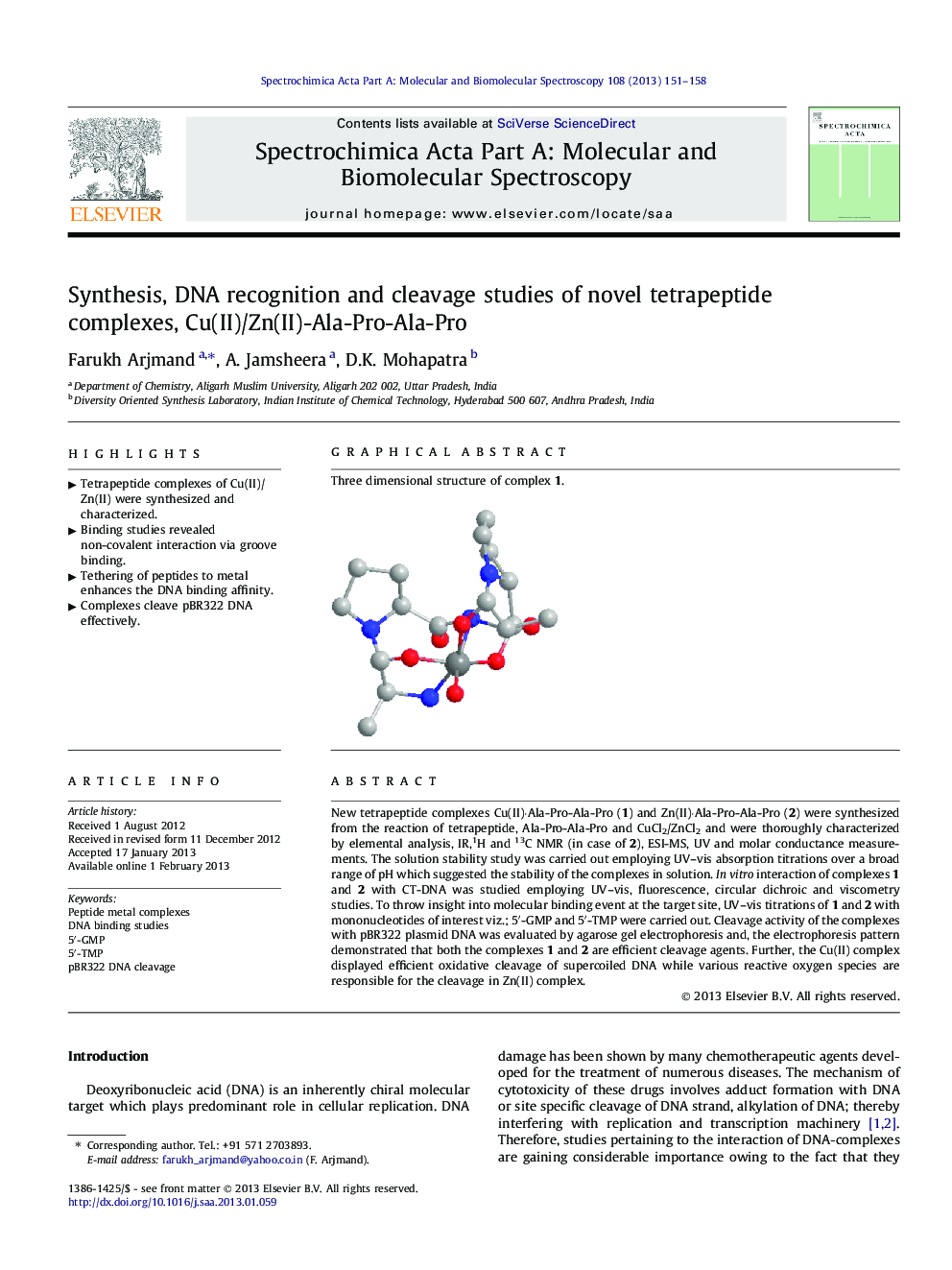| Article ID | Journal | Published Year | Pages | File Type |
|---|---|---|---|---|
| 1234764 | Spectrochimica Acta Part A: Molecular and Biomolecular Spectroscopy | 2013 | 8 Pages |
New tetrapeptide complexes Cu(II)·Ala-Pro-Ala-Pro (1) and Zn(II)·Ala-Pro-Ala-Pro (2) were synthesized from the reaction of tetrapeptide, Ala-Pro-Ala-Pro and CuCl2/ZnCl2 and were thoroughly characterized by elemental analysis, IR,1H and 13C NMR (in case of 2), ESI-MS, UV and molar conductance measurements. The solution stability study was carried out employing UV–vis absorption titrations over a broad range of pH which suggested the stability of the complexes in solution. In vitro interaction of complexes 1 and 2 with CT-DNA was studied employing UV–vis, fluorescence, circular dichroic and viscometry studies. To throw insight into molecular binding event at the target site, UV–vis titrations of 1 and 2 with mononucleotides of interest viz.; 5′-GMP and 5′-TMP were carried out. Cleavage activity of the complexes with pBR322 plasmid DNA was evaluated by agarose gel electrophoresis and, the electrophoresis pattern demonstrated that both the complexes 1 and 2 are efficient cleavage agents. Further, the Cu(II) complex displayed efficient oxidative cleavage of supercoiled DNA while various reactive oxygen species are responsible for the cleavage in Zn(II) complex.
Graphical abstractThree dimensional structure of complex 1.Figure optionsDownload full-size imageDownload as PowerPoint slideHighlights► Tetrapeptide complexes of Cu(II)/Zn(II) were synthesized and characterized. ► Binding studies revealed non-covalent interaction via groove binding. ► Tethering of peptides to metal enhances the DNA binding affinity. ► Complexes cleave pBR322 DNA effectively.
